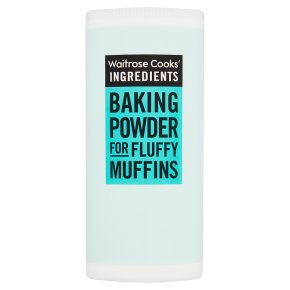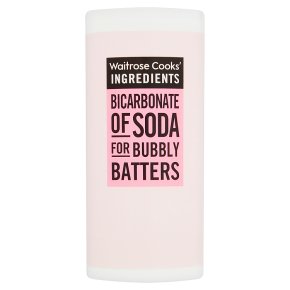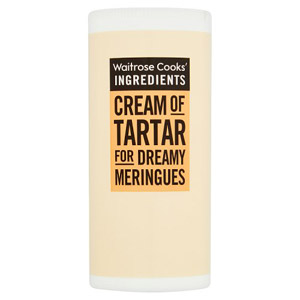We sell all these 3 products on our site, but hands up if you really know what the difference is, and when to use what.
Ok, admittedly there is a bit of a hint on the tubs, but here we try and explain a bit more behind the science of the powders.
In actual fact all three ingredients are very different, even though they look very similar. All three are leaveners, and leaveners are substances that make the dough rise. Nevertheless, the chemical makeup of the three is where they are different, and these different chemical makeups cause them to behave differently.
Bicarbonate of soda, also known as sodium bicarbonate or baking soda, is a pure leavening or rising agent. It reacts with the acidic components of batters (think cocoa, lemon juice or cream of tartar) and causes the batter to expand and rise. Has your bicarb been knocking around your pantry for a while? To test if it’s still active, mix it ½ t with vinegar. If it fizzes and bubbles, it’s still good to use. Discard if not.
Baking soda is powerful; thus, it needs to be used in just the right amount. If too much is used, then some will be leftover. This causes a soapy metallic taste that can ruin a recipe.
Cream of tartar is an acid, and it is a by-product of winemaking. Basically, after wine ferments in barrels, there is a residue leftover in the used barrels that is scraped off. Cream of tartar is normally used along with bicarb to create a raising agent, causing your bakes to rise. (In essence, this is baking powder – see below). Cream of tartar can also be added to simple syrups to prevent the formation of sugar crystals. It can also be used to stabilise meringues that are perfectly peaked and fluffy.
No cream of tartar? For every 1 teaspoon cream of tartar required, substitute with 2 t of another acid such as lemon juice or vinegar and mix with baking soda.
Baking powder is a mixture of baking soda and cream of tartar. The baking soda, which is a base, will react with the cream of tartar (an acid) when it gets wet. As soon as the dry ingredients are mixed in with the wet ingredients, the acid-base reaction will cause leavening. When the baking powder is exposed to heat, further leavening takes place as the heat speeds up the reaction already happening between the baking soda (base) and the cream of tartar (acid).
Is your tub of baking powder still good to use? Test if it’s still good by mixing ½ t baking powder with a little water. If it foams, it’s good to use.
Make your own baking powder from baking soda and cream of tartar: mix 1 part baking soda to 2 parts of cream of tartar.
Can they be used interchangeably?
Baking soda, cream of tartar, and baking powder are quite different. Though many people face the problem of not having the right one when trying to put together a recipe, great care should be taken when trying to substitute one for the other.
It is important to remember that baking soda has around four times the power of baking powder. So a ¼ teaspoon of baking soda is about the same as one teaspoon of baking powder.
Also, there needs to be enough acidic ingredients to deal with all of the baking soda, and this can be tricky. If you do not account for the acid-base reaction, then you will get that metallic soapy aftertaste that no one likes. Some acidic ingredients that would neutralize the baking soda could be buttermilk, yogurt, lemon, or vinegar.
You may have the opposite problem. You may have a recipe that calls for baking soda, but all you have is baking powder. This is an easier problem to solve. Simply take the amount of baking soda the recipe calls for and triple that amount. That’s how much baking powder you should use. No other modification to the recipe needs to be made since the acid-base reaction is already balanced in the baking powder. The baking powder is made from a combination of baking soda and cream of tartar, so the acid-base should already be balanced.
Whatever you decide to buy, make sure you keep them dry and store them in their tubs with the lids on tight.
Happy Baking 🙂




